Electric HGV proves point with Mercedes-AMG F1
W16 race cars were taken to the Dutch Grand Prix in a Mercedes eActros 600 - for the first time in Europe
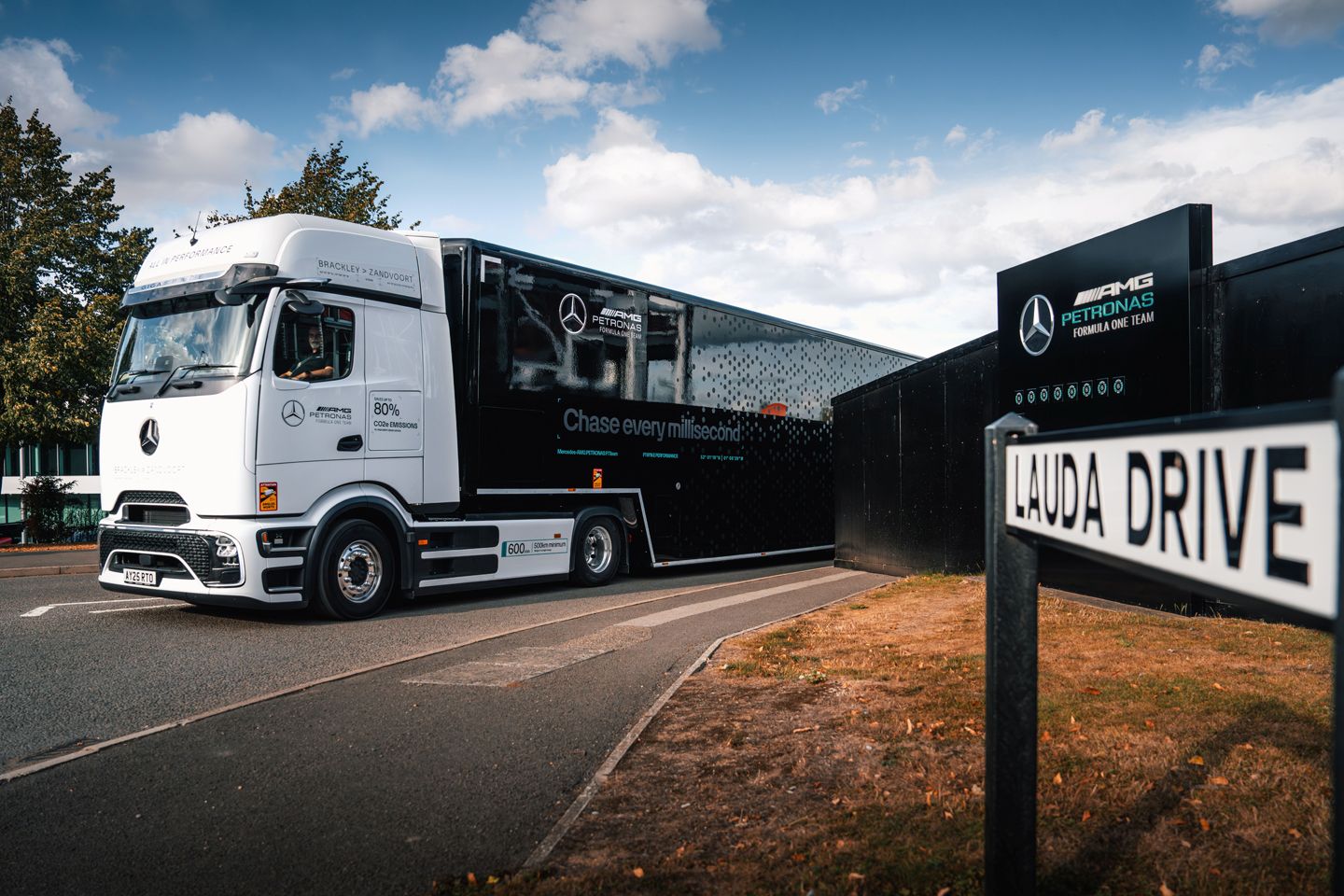
To those who are Le Mans or Nurburgring regulars, the thought of driving from Brackley to Zandvoort won’t pose much challenge at all. It’s 418 miles, easily doable in a day. Some of you may even have done it for the Dutch Grand Prix. It would be rather more challenging in an HGV perhaps, what with hours and maximum speeds. But an electric truck? Carrying F1 cars? Sounds almost like science fiction still. Not for Mercedes-Benz, though, which reportedly employed a trio of eActross 600 electric trucks to take all the cars and supporting kit needed by the F1 team from England to Holland at the end of last month. And is only now boasting about it.
Alright, so it’s hardly the Cannonball Run or Peking to Paris, but Mercedes reckons they’re the first team in F1 to use an electric HGV during the European season. It follows the use of biofuel since 2022 for its old diesels, then a test electric run around the block to Silverstone for the British GP. And they seem likely to continue doing so as well, at least when F1 returns to Europe next year, given the eActros - going off its consumption stats - would have done the entire 418 miles without charging. When it does plug in, the 600kWh (!) lithium-ion phosphate battery can be charged from 20 per cent to 80 per cent in 25 minutes. But that does require something called the Megawatt Charging System (MCS), and we haven’t seen many of those around. So for this journey, a Milence truck hub was used, which can currently offer up to 400kW CCS charging; once MCS is up and running, it should offer up to 1,000kW…
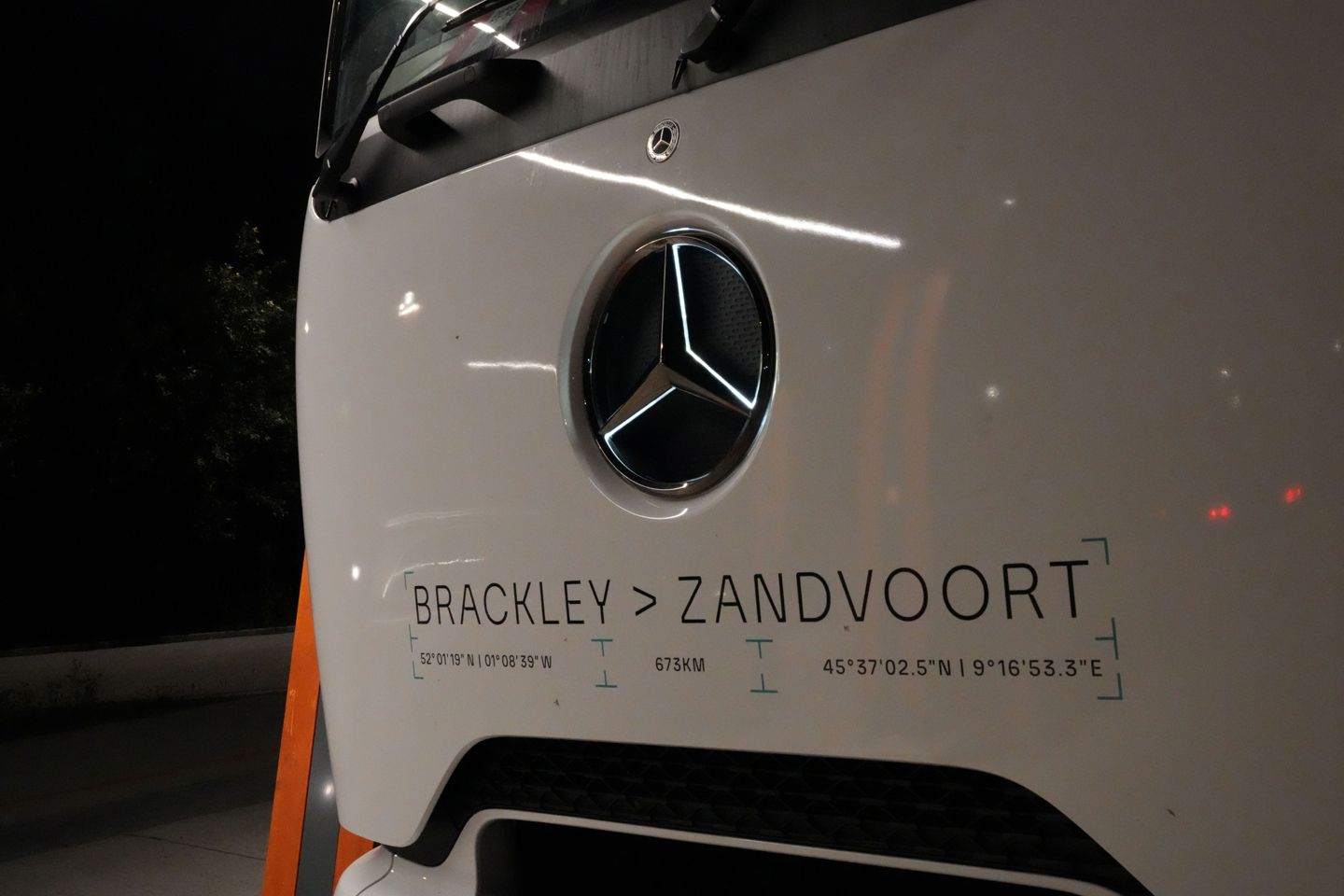
Alice Ashpitel is Head of Sustainability for the F1 team. She said: “As a team, our commitment to sustainability means that we rethink how we move, not just how we race. While we are driven by performance on track, we are incredibly proud that our innovations travel beyond the grid. The use of the Mercedes-Benz eActros 600 trucks, initially piloted at our home race in July, and then used to transport our race cars to Zandvoort, is another important step in our decarbonisation journey.” The overall aim is to be ‘one of the most sustainable global professional sports teams’ - nothing if not ambitious at Mercedes-AMG.
The eActros was International Truck of the Year 2025, and in the world of trucking a minimum range is quoted rather than a maximum. It’s 372 miles, so little surprise that it would have achieved 418 without charge. Apparently, the Merc ‘stood out at the Dutch Grand Prix from all the diesel-powered transportation used by other competitors.’ And it takes a lot to raise eyebrows in a Grand Prix paddock. F1 being F1, it surely won’t be long before the rest of the teams follow this lead…
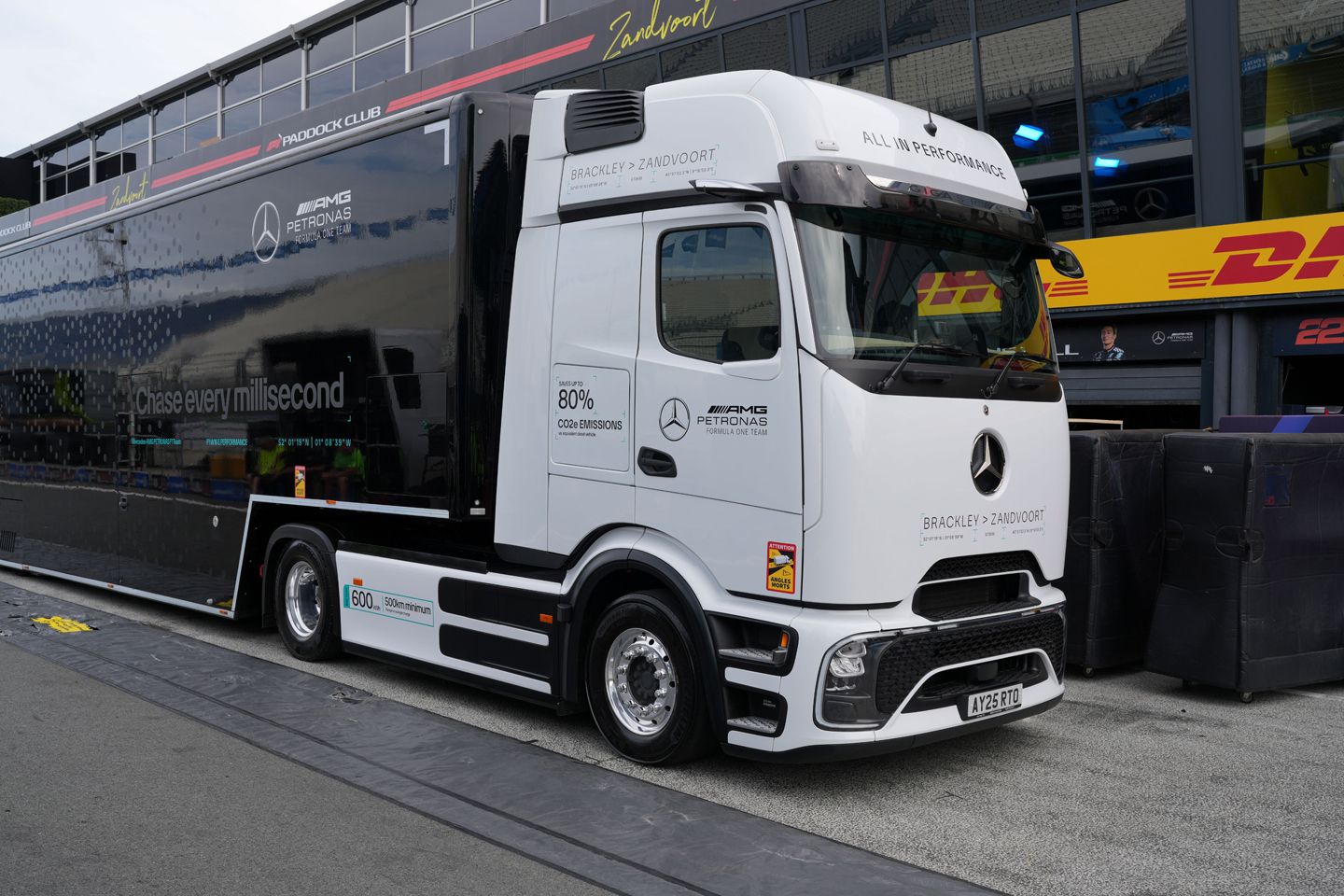
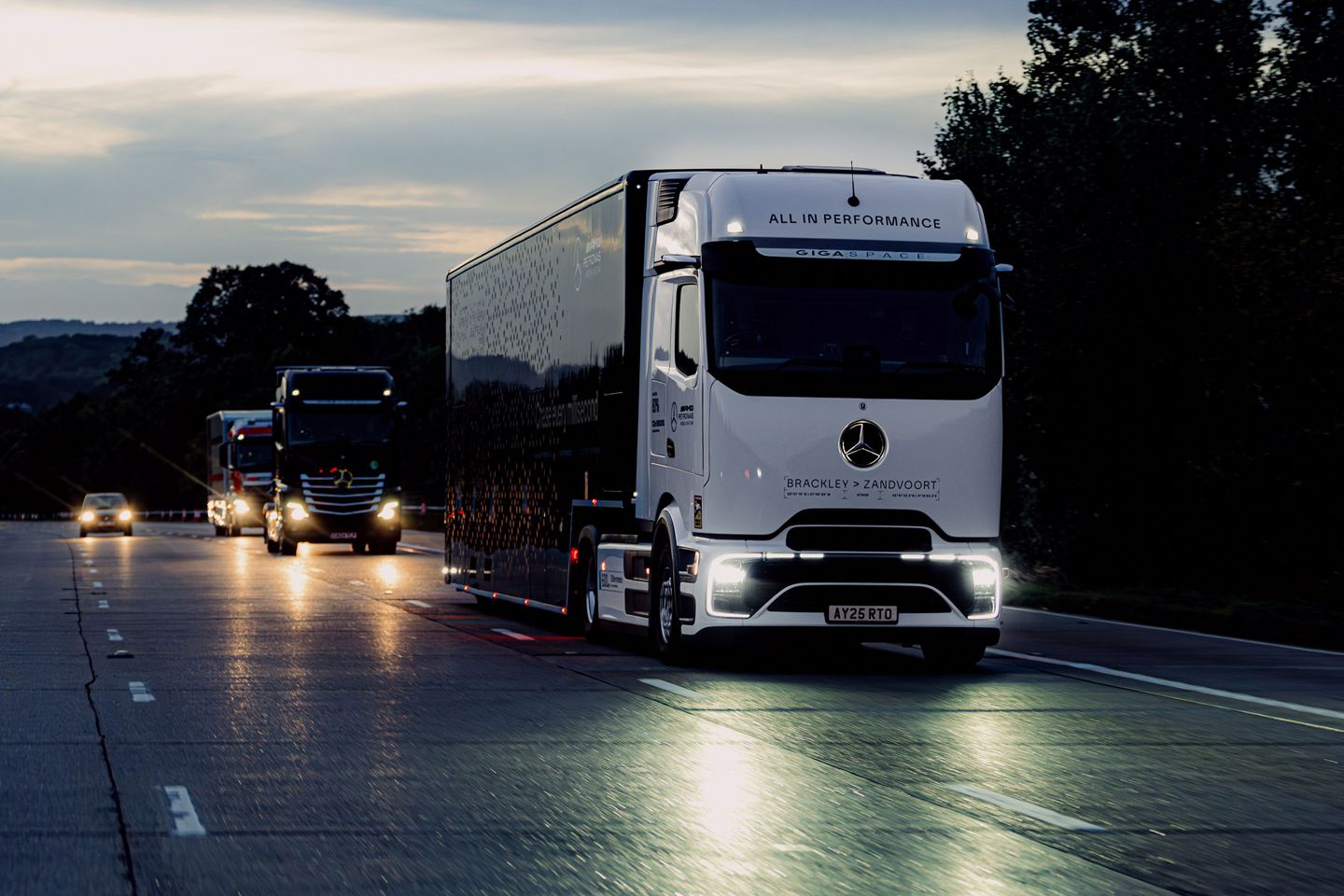
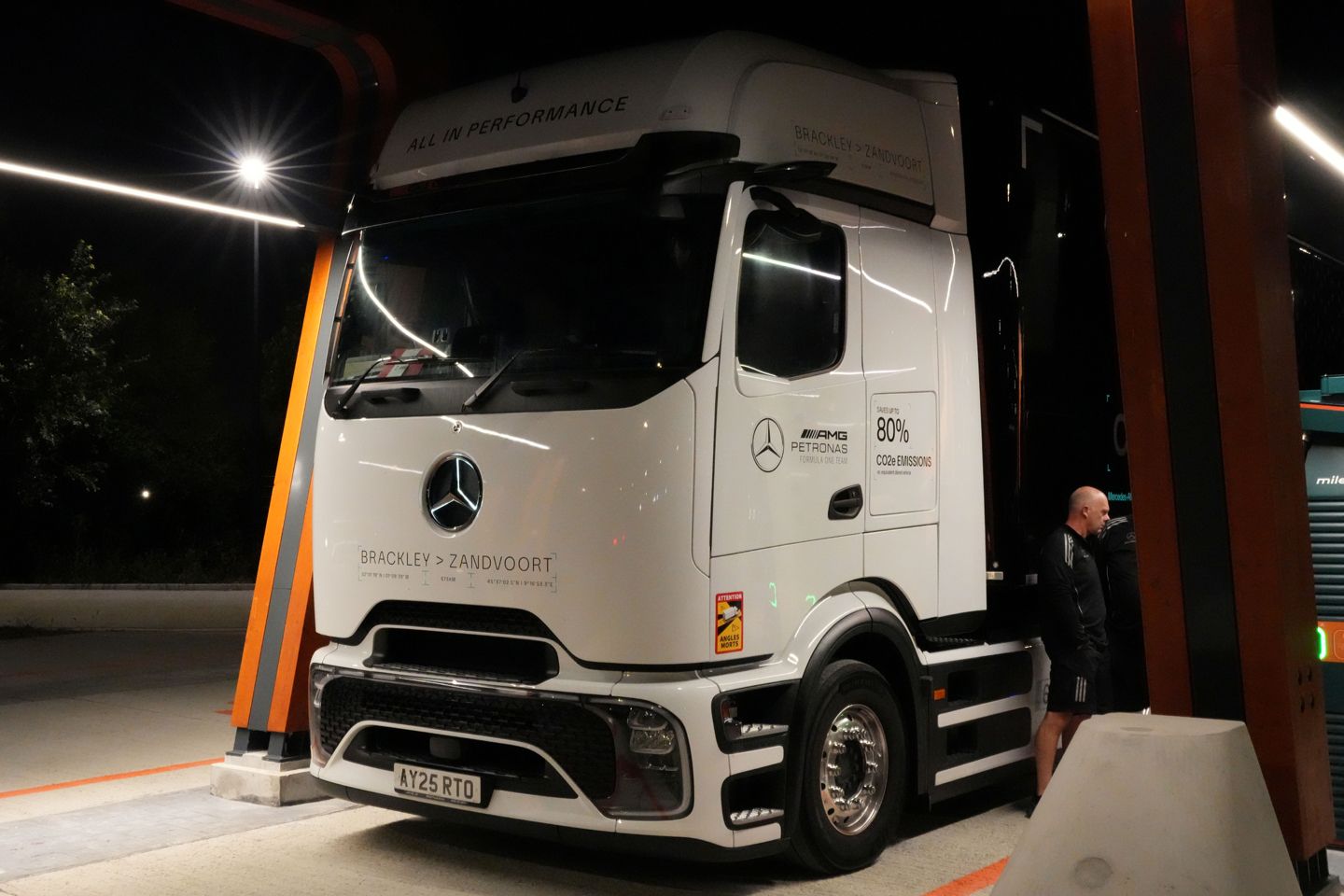

A 500 kW charger could replenish that much charge (5/8ths of the battery) in 45 minutes, which doesn't seem an infeasible charging speed.
So as batteries get cheaper this could become commonplace, at least for volume-limited rather than weight-limited cargo.
https://encrypted-tbn0.gstatic.com/images?q=tbn:AN...
That adding battery capacity means you can travel further, and might make it marginally more convenient / less annoying to live with (assuming nothing disrupts your carefully planned route and/or charging plans)?
Is that not basically just the same as saying a larger diesel tank enables you to travel further?
Seems a bit of a "well, d'uh..." Press Release. lol
Would be interesting to know the weight and also the 'carbon impacts' associated with dragging all the component materials out of the ground and turning them into a truck-shaped object.
That adding battery capacity means you can travel further, and might make it marginally more convenient / less annoying to live with (assuming nothing disrupts your carefully planned route and/or charging plans)?
Is that not basically just the same as saying a larger diesel tank enables you to travel further?
Seems a bit of a "well, d'uh..." Press Release. lol
Would be interesting to know the weight and also the 'carbon impacts' associated with dragging all the component materials out of the ground and turning them into a truck-shaped object.
https://www.mercedes-benz-trucks.com/gb/en/trucks/...
A 500 kW charger could replenish that much charge (5/8ths of the battery) in 45 minutes, which doesn't seem an infeasible charging speed.
So as batteries get cheaper this could become commonplace, at least for volume-limited rather than weight-limited cargo.
A good proportion of the 45 minute breaks are taken in laybys at the side of the road, or wherever the vehicle is loaded/unloaded. Those places are unlikely to see ultrafast chargers being built.
Even the motorway service stations wouldn't be easy. Taking Peterborough services for example, which has about 150 HGV spaces. If each of those spaces was fitted with one of those ultrafast (1 megawatt) chargers, the power consumption of the services just for HGV chargers would become about 150 megawatts. If they were used half of the time, over the course of the year that would be around 650 Gigawatt hours.
For comparison, the total domestic electricity consumption for the whole of Peterborough was 275 Gigawatt hours in 2023.
Battery HGVs are going to be a good solution for the relatively short hop final distribution where a vehicle may only do 150 miles in a day but they don't make sense for long haul.
For long haul, a far better solution is to provide power via an overhead wire. Even better still, you can join 50 vehicles together, all moved by one driver, and run them on narrow strips of steel to reduce rolling resistance.....
A 500 kW charger could replenish that much charge (5/8ths of the battery) in 45 minutes, which doesn't seem an infeasible charging speed.
So as batteries get cheaper this could become commonplace, at least for volume-limited rather than weight-limited cargo.
A good proportion of the 45 minute breaks are taken in laybys at the side of the road, or wherever the vehicle is loaded/unloaded. Those places are unlikely to see ultrafast chargers being built.
Even the motorway service stations wouldn't be easy. Taking Peterborough services for example, which has about 150 HGV spaces. If each of those spaces was fitted with one of those ultrafast (1 megawatt) chargers, the power consumption of the services just for HGV chargers would become about 150 megawatts. If they were used half of the time, over the course of the year that would be around 650 Gigawatt hours.
For comparison, the total domestic electricity consumption for the whole of Peterborough was 275 Gigawatt hours in 2023.
Battery HGVs are going to be a good solution for the relatively short hop final distribution where a vehicle may only do 150 miles in a day but they don't make sense for long haul.
For long haul, a far better solution is to provide power via an overhead wire. Even better still, you can join 50 vehicles together, all moved by one driver, and run them on narrow strips of steel to reduce rolling resistance.....
A 500 kW charger could replenish that much charge (5/8ths of the battery) in 45 minutes, which doesn't seem an infeasible charging speed.
So as batteries get cheaper this could become commonplace, at least for volume-limited rather than weight-limited cargo.
I also have no idea how much a trailer weighs full of F1 gear but I hazard a guess that the total weight is a lot less than 44 tonne that a truck can be. I can imagine an 6x2 artic tipper full with sugar beet to the max the range will be severely hampered. God knows where the farmer will get the money to install these fancy chargers when they can barely afford to pave a road to their farm!
As someone who drives trucks for a living this thing is simply a PR stunt. I can drive 300+ miles a day easily without even seeing a service station as my breaks are dictated to me by the needs of the day. For example a drive down to Southampton tip and drive back. I take my 45 minute when getting unloaded and drive non stop back to base. I want to be back home eating dinner with my wife and children. Not coming back to a cold plate because I have had to stop for an extra hour to charge up or even worse cannot get home at all because I have ran out of duty time!
Someone who is used to driving a car might think a HGV doing 370 miles on a charge is pretty good but a 4x2 with extended tanks which the Euro boys use will do over 3000 miles.
A 500 kW charger could replenish that much charge (5/8ths of the battery) in 45 minutes, which doesn't seem an infeasible charging speed.
So as batteries get cheaper this could become commonplace, at least for volume-limited rather than weight-limited cargo.
I also have no idea how much a trailer weighs full of F1 gear but I hazard a guess that the total weight is a lot less than 44 tonne that a truck can be. I can imagine an 6x2 artic tipper full with sugar beet to the max the range will be severely hampered. God knows where the farmer will get the money to install these fancy chargers when they can barely afford to pave a road to their farm!
As someone who drives trucks for a living this thing is simply a PR stunt. I can drive 300+ miles a day easily without even seeing a service station as my breaks are dictated to me by the needs of the day. For example a drive down to Southampton tip and drive back. I take my 45 minute when getting unloaded and drive non stop back to base. I want to be back home eating dinner with my wife and children. Not coming back to a cold plate because I have had to stop for an extra hour to charge up or even worse cannot get home at all because I have ran out of duty time!
Someone who is used to driving a car might think a HGV doing 370 miles on a charge is pretty good but a 4x2 with extended tanks which the Euro boys use will do over 3000 miles.
https://www.youtube.com/@electrictrucker
https://www.youtube.com/watch?v=4L6gx_RFmSs
They sit in RDC’s so can be charged on the dock and they don’t stop the wheels moving if the system stops working/ runs out of charge.
Plus - when we looked at electric HGV’s recently they were 3x/4x the cost - we could buy 3/4 trucks for the price of one E-HGV - and remote DC charging away from base doesn’t exist. The margins in transport just don’t support them outside of Ikea/ F1/ specialist vanity projects at the moment.
A shame because they are lovely to drive and great round town.
https://www.zf.com/products/en/cv/emea/campaigns/e...
They sit in RDC s so can be charged on the dock and they don t stop the wheels moving if the system stops working/ runs out of charge.
Forums | General Gassing | Top of Page | What's New | My Stuff




